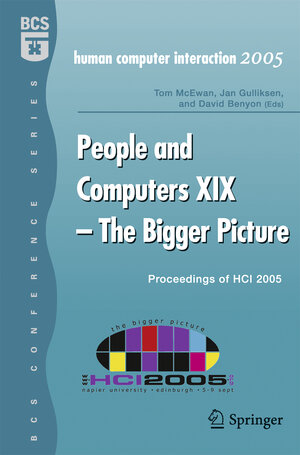
×
![Buchcover ISBN 9781846281921]()
People and Computers XIX - The Bigger Picture
Proceedings of HCI 2005
herausgegeben von Tom McEwan, Jan Gulliksen und David BenyonAs a new medium for questionnaire delivery, the Internet has the potential to revolutionize the survey process. Online (Web-based) questionnaires provide several advantages over traditional survey methods in terms of cost, speed, appearance, flexibility, functionality, and usability [Bandilla et al. 2003; Dillman 2000; Kwak & Radler 2002]. Online-questionnaires can provide many capabilities not found in traditional paper-based questionnaires: they can include pop-up instructions and error messages; they can incorporate links; and it is possible to encode difficult skip patterns making such patterns virtually invisible to respondents. Despite this, and the emergence of numerous tools to support online-questionnaire creation, current electronic survey design typically replicates the look-and-feel of pap- based questionnaires, thus failing to harness the full power of the electronic survey medium. A recent environmental scan of online-questionnaire design tools found that little, if any, support is incorporated within these tools to guide questionnaire design according to best-practice [Lumsden & Morgan 2005]. This paper briefly introduces a comprehensive set of guidelines for the design of online-questionnaires. It then focuses on an informal observational study that has been conducted as an initial assessment of the value of the set of guidelines as a practical reference guide during online-questionnaire design. 2 Background Online-questionnaires are often criticized in terms of their vulnerability to the four standard survey error types: namely, coverage, non-response, sampling, and measurement errors.



